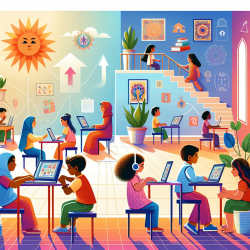Introduction
The COVID-19 pandemic has underscored the vital role of social media in advocacy and information dissemination. A recent study titled "Women-Focused Nonprofit Organizations and Their Use of Twitter During the COVID-19 Pandemic: Characterizing a Gendered Pandemic Through Information, Community, and Action" provides a data-driven analysis of how nonprofit organizations utilized Twitter to advocate for women and girls during the pandemic. This research offers valuable insights that can be applied to improve outcomes in various fields, including speech-language pathology.
Key Findings from the Study
The study analyzed tweets from five women-focused nonprofit organizations and identified nine gender-related themes, with a particular emphasis on women’s safety, labor, and economic situation. The research applied a theoretical framework of microblogging functions, categorizing tweets into informational, community-oriented, and action-oriented. Informational tweets were most prevalent, while community-oriented tweets received the highest engagement in terms of likes.
Implications for Practitioners
For practitioners in speech-language pathology, especially those involved in online therapy services like TinyEYE, the study's findings offer several actionable insights:
- Utilize Social Media for Information Dissemination: As the study highlights, informational tweets are crucial. Practitioners can use platforms like Twitter to share evidence-based practices, therapy tips, and resources with parents and educators.
- Engage the Community: Community-oriented content drives engagement. Practitioners should foster online communities where parents and educators can share experiences and support each other, enhancing the therapy process.
- Encourage Action: Although less frequent, action-oriented content is essential for mobilizing support. Practitioners can encourage parents and educators to participate in advocacy efforts for better educational policies or resources for children with speech and language challenges.
Encouraging Further Research
The study opens avenues for further research on how social media can be leveraged in speech-language pathology. Practitioners are encouraged to explore how different platforms can support therapy goals, enhance parent engagement, and improve child outcomes. By integrating social media strategies into their practice, practitioners can contribute to a broader understanding of its impact on child development and education.
Conclusion
The insights from the study on women-focused nonprofit organizations' use of Twitter during the pandemic can be transformative for practitioners in speech-language pathology. By embracing data-driven social media strategies, practitioners can enhance their practice, engage communities, and ultimately improve outcomes for children. To delve deeper into the original research, please follow this link: Women-Focused Nonprofit Organizations and Their Use of Twitter During the COVID-19 Pandemic: Characterizing a Gendered Pandemic Through Information, Community, and Action.










